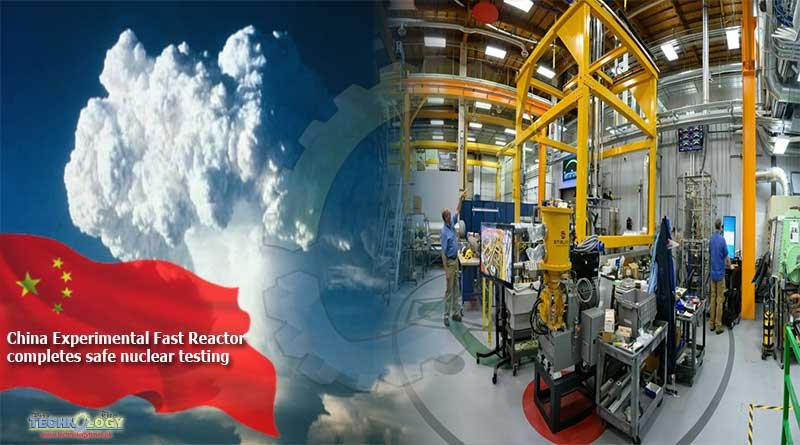A manual emergency shutdown test of the China Experimental Fast Reactor (CEFR) was completed on July 31, according to the official WeChat account of China National Nuclear Corporation (CNNC) on 7 August.

CNNC officials said this marked the end of commissioning tests for the power test phase of the reactor and verified that its performance met the design requirements under stable conditions and expected transient operating conditions. It also marks the successful completion of the first core cycle trial operations task of the CEFR, laying a solid foundation for the subsequent commissioning phase to be transferred to the operations phase.
China’s fast reactor development involves a three-step strategy – from an experimental fast reactor, to a demonstration fast reactor, to a commercial fast reactor. Officials said the CEFR has laid a solid foundation for the research and development of large-scale fast reactor power plants in China. Commissioning of the CEFR includes the pre-operation test phase, fuel loading, initial criticality and low-power test phase, and the power test phase.
The CEFR was restarted for high-power operations on 19 June and during the subsequent 40-day operations period, the team successively completed a number of tests including a Dynamic Test of Steam Turbine DEH Control System, a 75% Power Turbine Load Rejection Test and Cold Start Power-Flow Measurement Test. Officials said that after completing the first refuelling and related maintenance work, the team will restart operations to carry out planned experimental research work.
The pool-type sodium-cooled CEFR reactor (BN-20 project) was built in China with the participation of Russian specialists from OKBM Afrikantov, Gidropress, the NN Dollezhal Research & Development Institute of Power Engineering (Nikiet), and the Kurchatov Institute. Its declared thermal capacity is 65 MWt/ 20 MWe. It uses highly enriched uranium (64.4% enrichment) imported from Russia. The reactor is included in International Atomic Energy Agency (IAEA) PRIS database for power units as well as in the IAEA database for research reactors.
Construction of the reactor began in May 2000. It was first brought to first criticality in July 2010, and in July 2011 it was connected to the network. There is no data on power generation in the PRIS database. Some 72 hours of continuous operation was first achieved in 2014.
Following extended tests at low power operation, the tests at high power began in June, ending with full power operation for 40 days and the manual shutdown.
The article is originally published at nei magazine.
